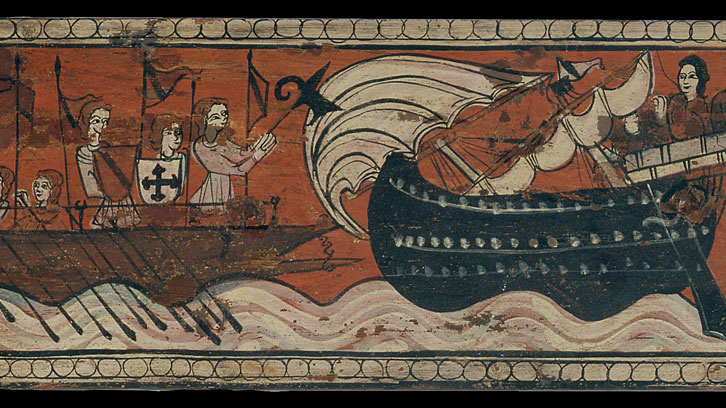Shipbuilding in Catalonia in the Late Middle Ages

This thesis is about shipbuilding in Catalonia and in all the ports of the Crown of Aragon in the Late Medieval Period (XIII-XVI c.). The information has been taken from the archaeology, iconography and archival data. First, we explain the change from the shell-first shipbuilding principle, with a complex system of tenons and keys, to the skeleton-first principle, with the planks of the hull edge-to-edge (VI-XI c.). After the XIth century, the skeleton-first principle was the only naval construction used in the Mediterranean, but it evolved with the design of frames, stem and stern elements.
Late medieval shipbuilding in Catalonia followed the general Mediterranean tendency of using the skeleton-first shipbuilding principle and placing the planks of the hull edge-to-edge. But the construction process varied depending on the ship carpenter. The design of the frame shapes from one to more moulds could modify the construction process, as we can see in Serçe Liman (11th c.) which used several moulds, and in Culip VI (13th c.) which used the master mould, the rise square and the ruler. Between the 13th and 15th centuries all the shipwrecks known used the master mould (or whole-moulding) method, although other factors could also change the construction process, not the principle. One example is Les Sorres X (14th c.) with its keel built with two overlayed pieces.
Naval tipology is clearly divided into three groups: galleys, ships and boats. The function gives us the form of the hull. War ships, moved by sail and oars, had to be light, fast, with little volume and depth, that’s why they were long ships as the galleys. The ships moved only by sail, with a great capacity of cargo and a small crew, were the best trading-ships. They were round ships as the ‘nef’. The XIVth century is considered as a revolutionary period from a naval point of view: the introduction of the Atlantic naval technology (shell-first and clinked hulls, square sail and stern rudder). Soon the ‘nefs’ adopted some of this technology (square sail and stern rudder), and so did later the Mediterranean galleys and boats.
We have finally written about the people who built and repaired these ships: ship carpenters, caulkers, smiths, sailmakers, and so on. There were two types of ship carpenters, the ones who owned a shipyard and lead the construction, gave the shape of the hull and its elements, and those who did not have a shipyard, known as secondary or itinerary ship carpenters, who worked all along the coast. Some of them embarked on ships and galleys and got the job of ‘nauxer’ (expert in navigation).
Figure 1: Painted beam from de Teruel, now at the Museu Nacional d’Art de Catalunya, dated to the late thirteenth century or early fourteenth. You can see a ‘nef’ attacked by two galleys.
References
“La construcció naval a la Catalunya baixmedieval. Concepció, gestació, vida i mort dels vaixells segons la documentació escrita, arqueològica i iconogràfica”, PhD thesis by Marcel Pujol i Hamelink, supervised by Ramon Martí Castelló and Éric Rieth, and read at the Department of Antiquity and Middle Age Studies.

